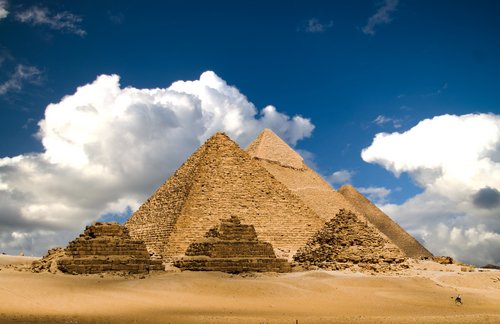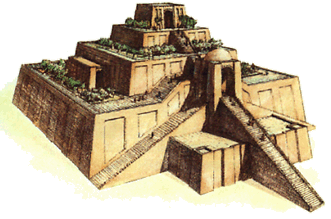Agean Art
Option #1
I chose to compare Bull's Head Rhyton from the Minoan culture to The Great Lyre With Bull's Head from the ancient near eastern Arcadian culture in Ur
But first, the ways they are different are also important to look at. For example, the Great Lyre's Bull head has a very stylized beard and hair made from lapis lazuli that hangs down far past its chin. However the Bull in the Rhyton form is more realistic in its rendering, and although squiggly lines are still used to form the idea of curly hair on its head and face, it can be more accurately compared to that of a real living bull. Also instead of using fine materials such as the gold, silver, lapis lazuli and Bitumen seen in the Great Lyre, The Bull's head Rhyton only uses a common form of soap stone called Steatite, shells, rock crystal and red jasper.
Both Bulls are stylized, one more than the other. For example the Bull's Head Rhyton uses bright blue for its fur, and elegant golden horns that stretch upwards in an elegant swoop. The Bull's head on the Great Lyre is easier to see the cultural background and stylization with the long locks of curling hair for the beard, the large open and outlined eyes, the large ears, and the golden flesh color of the fur and horns. Both cultures used imagery of the bull for its representation of strength, power, and fertility. Also it seems as if both forms of art were used for a religious purpose, or ceremony. Although the Bull's head Rhyton is in itself entirely the bull's head, the Great Lyre seen in the previous culture features the bull's head as only a kind of decoration on the bigger piece. this piece being an insturment including a story element below the head. Because of this we can easily see the cultural birthplace as it were that each piece was born into. In the Minoan culture Rhytons were used frequently in different styles for celebration or religious ritual, and were intended to be carried instead of set on display. Where as the Great Lyre with Bull's Head was born into a culture that was obsessed with religious nuances and story telling through pictures. So both pieces easily reflect their home countries, even though they are decently far away from one another.
I find it interesting also that both pieces had to have the wooden element of the art restored because they didnt hold up against the daily use and battery of careless hands through the ages, and possibly even because of similar climate difficulties that could have affected the deterioration rate of both items. But all in all, both pieces were held in high reverie, and were used often because of that reason, and used well. For the beauty that each piece still holds to this day is astounding.




